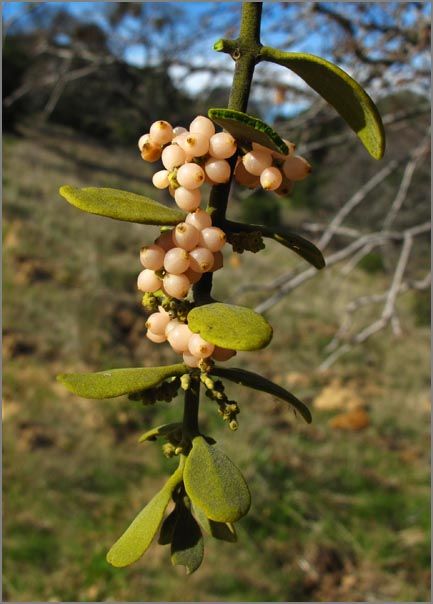
American Mistletoe (Phoradendron flavescens) by Mary Vaux Walcott, 1923. (Image courtesy Smithsonian American Art Museum)
When you’re caught under the mistletoe, the tradition is to kiss the person next to you. But this holiday season you may want to wow them first with some cool mistletoe facts from Smithsonian botanist Sylvia Orli.

The mistletoe Phoradendron serotinum. (Photo by Jorg and Mimi Fleige)
- Mistletoe is found mainly in tropical or temperate areas. Its name refers to species of parasitic plants from families in the order of flowering plants known as Santalales. There are some 1,300 species of mistletoe worldwide.
- The word “mistletoe” is thought to derive from the Anglo-Saxon “mist” or “mistel”, meaning dung, and “tan”, meaning twig, or “dung twig”. This derivation stems from the fact that mistletoe is mostly spread by birds, through their droppings.
- Birds also squeeze mistletoe seeds from the fruits before eating them and wipe the seeds on a branch. Mistletoe seeds are covered in a sticky substance so they stay put on a limb until they sprout.
- Mistletoe is semi-parasitic, meaning it invades a living branch of a host tree or bush with a shallow root (called a “hastorium”) and absorbs food, minerals and water, and also produces food through photosynthesis in its evergreen leaves.
- Viscum album, the European mistletoe, and Phoradendron serotinum, from North America, are the two mistletoe species most commonly harvested and sold during the Christmas holidays.
- Mistletoe is considered a pest in many areas of the world. A host tree or bush heavily infested with mistletoe can be stunted or even die. Still, mistletoe provides an important food source and a nesting place for a variety of bird species.






